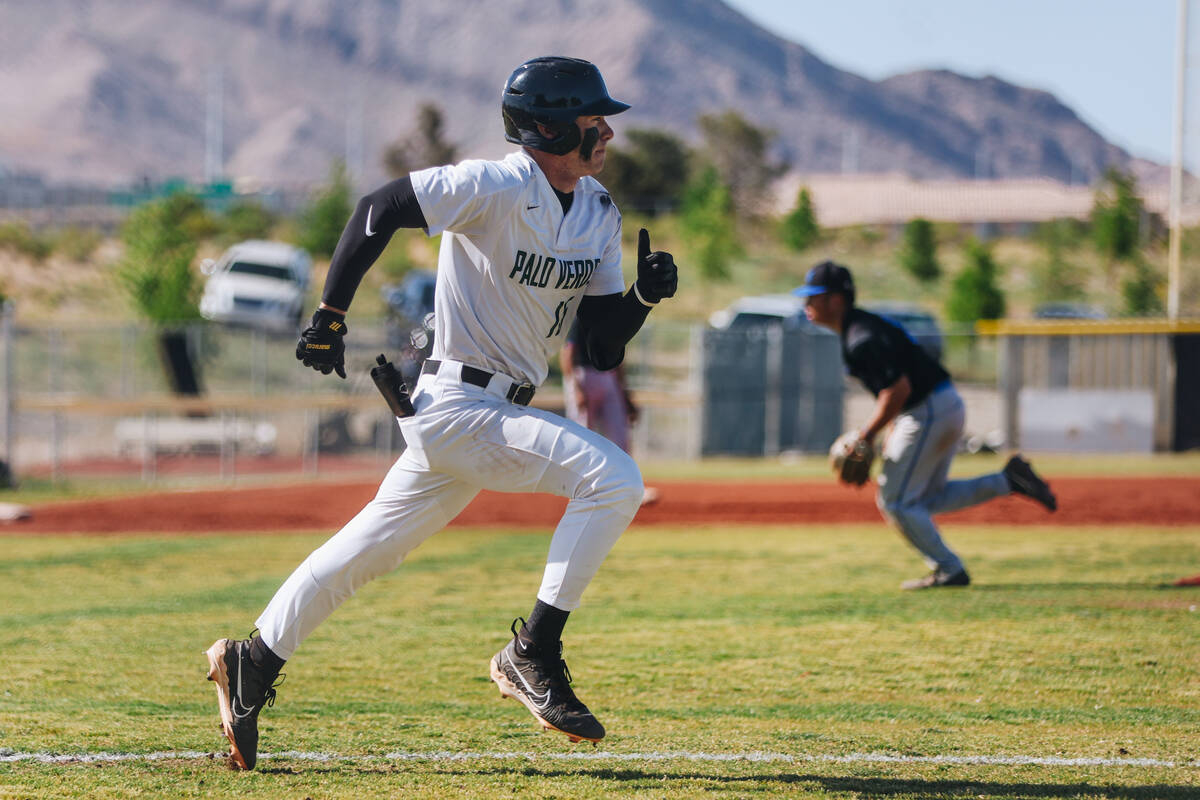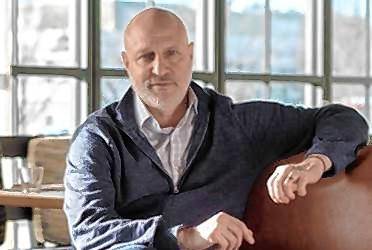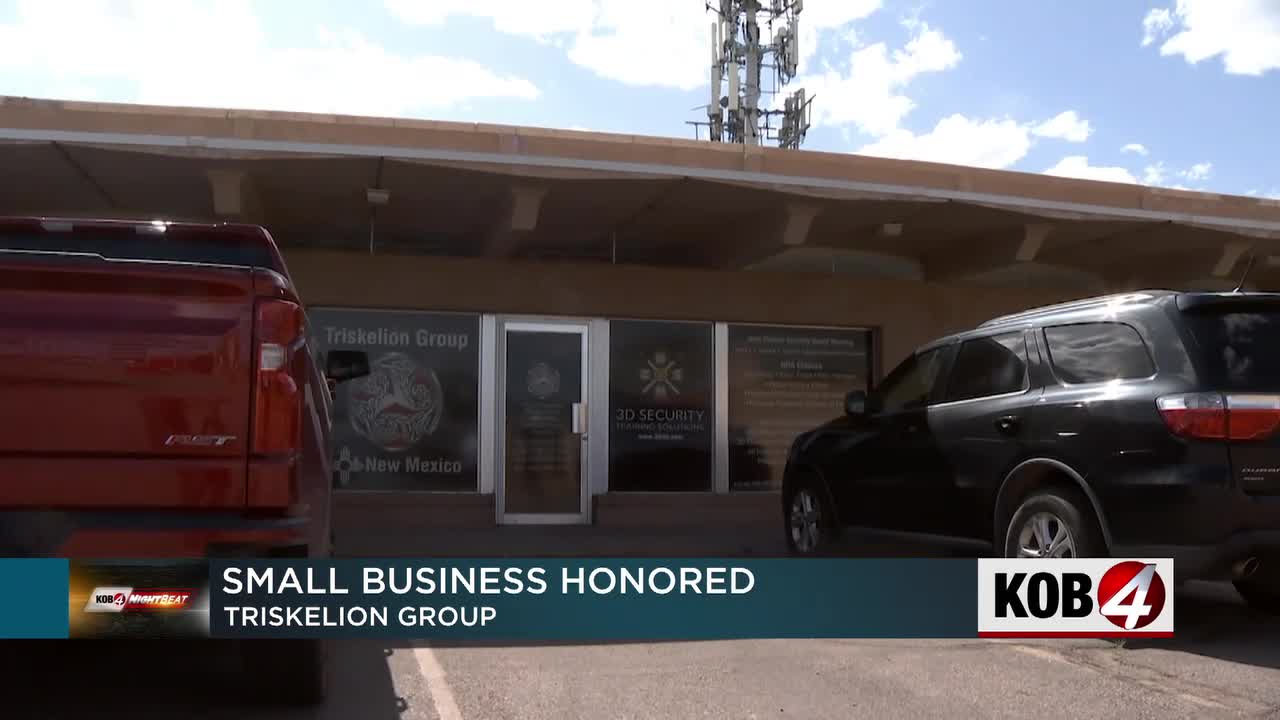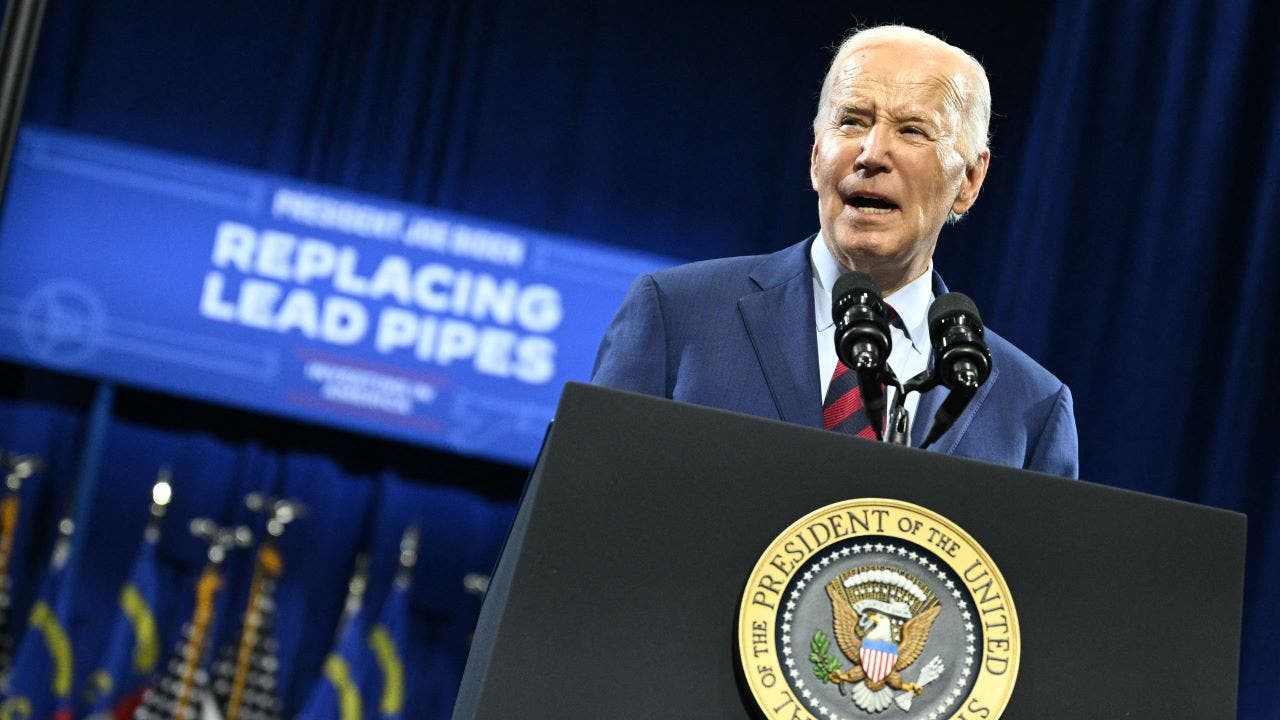Lifestyle
Think A.I. is Coming for the Watch World? It’s Already There.

GENEVA — At IWC Schaffhausen’s booth at the Watches and Wonders fair in the convention center here this spring, Maurice Moitroux, IWC’s associate director of brand marketing, gestured toward a large, clunky, beige device sitting atop a counter near the entrance.
“It looks like a microwave, but it’s actually a computer,” he said.
Intended to conjure the retro-futuristic vibe of IWC’s new Ingenieur watch collection — an update to a 1976 model famously designed by Gerald Genta — the vintage NCR monitor, dating to the 1980s, was one of several period artifacts displayed in and around the booth, including an experimental Mercedes-Benz C 111-III car from the 1970s.
The computer, however, contained something unexpected: a ChatGPT 3.5-series module connected to a voice-activated application built to answer questions about Mr. Genta, who died in 2011, leaving behind a well-documented horological legacy.
The display was an apt metaphor for the luxury watch industry’s current relationship with artificial intelligence. On the surface, A.I. is still something of a non-starter, with few brand executives being willing to discuss it publicly. (A group of tech industry leaders, however, recently signed an open letter warning of the existential threat it may pose to humanity.)
Behind the scenes at big brands such as Cartier and Panerai, however, machine learning, a subset of A.I. that involves training machines to learn from data, is quietly revolutionizing how watches are made and brought to market.
A handful of watchmakers have admitted to using ChatGPT to generate snappy social media copy and the A.I.-based design platform Midjourney to whip up wacky mood boards (as in, “We want to do a shop and have it to look like it’s underwater in the Maldives,” George Bamford, a London-based watch customizer, said on a recent call).
But very few are communicating openly about it.
“Today, the watch industry is selling a high-end luxury experience,” Serge Maillard, publisher of the trade magazine Europa Star, said by phone from Geneva. “If A.I. can be used to elevate the experience, then the term A.I. might be a bit more present in the speech. But as long as it remains something more in the background, it will be in the shadows.”
Mr. Maillard said one reason the industry hadn’t mustered more enthusiasm for A.I. than it had for technological novelties such as NFTs, blockchain and the metaverse might have to do with the collapse last year of the NFT and cryptocurrency markets, which left them wary of unproven technologies.
“A.I. is a more silent revolution than NFTs but a deeper revolution,” he said. “It’s something everyone might use one day.”
For the handful of executives who have adopted it, A.I. has proved transformational.
“It’s saving me time with my design team on research, mood boarding,” Mr. Bamford, founder of Bamford Watch Department, said during a recent phone call. “I now freely admit that instead of going on Pinterest and Google to look up images, I’m putting in wording in Midjourney that will create a unique image. It doesn’t inform the design, but it starts the narrative.
“I wouldn’t use it to design a watch,” he said. “I’ve tried it a few times, and it always comes back like something you don’t want to see.”
Benjamin Arabov, chief executive of Jacob & Co., said he had a similarly disappointing design experience with A.I. when he used text prompts to generate a watch image. The concepts were impossible to manufacture, “like a waterfall flying in the watch,” he said in March at a company event in Geneva.
Mr. Arabov has, however, found A.I. useful for copywriting, especially for social media. “ChatGPT has become a really good resource,” he said. “‘Here’s all this info about this watch. Now, elegantly explain this timepiece in 100 words’ — because no one is going to read past that.”
Algorithms at work
In the manufacturing realm, watchmakers have used machinery powered by algorithms for at least the past five years. At Roger Dubuis, a system called Jarvis, named after the loyal butler in Marvel Comics’ “Iron Man,” “helps regulate machines, telling us if they are not so precise anymore, and they talk to each other,” Nicola Andreatta, chief executive of Roger Dubuis, said at Watches and Wonders Geneva.
Panerai, which, like Roger Dubuis, is owned by Compagnie Financière Richemont, employs a similar system that has been in place for about two years, said Jérôme Cavadini, the brand’s chief operating officer.
“We connect machines to machines, and they talk together,” Mr. Cavadini said at Watches and Wonders. “We are able to detect at what moment we are supposed to change the tools, and we can adjust their speed, detect temperature deltas and act accordingly to modify the digital settings of the machine.”
Where A.I., or machine learning, is poised to make the biggest impact on the watch industry is in helping to anticipate demand and speed goods to market.
“We developed algorithms and use them on a monthly basis to detect sales trends, and especially the deviation to the standard forecasts that we do,” Mr. Cavadini said. “The point is to connect demand to supply.”
The demand planning system, which Panerai implemented in September, helps the brand detect which products are selling out in certain markets so it can optimize their distribution. “Produce the right reference, for the right market, at the right moment,” Mr. Cavadini wrote in a follow-up email.
During a press roundtable event at the Cartier booth at Watches and Wonders, Cyrille Vigneron, the brand’s chief executive, said that A.I. was also transforming that brand’s demand planning and deployment models — and even giving Cartier insights into customer behaviors and attitudes.
“By having so much data coming from call centers or web inquiries or even what words customers use on comments or on their own social media, you have a lot of words,” Mr. Vigneron said. “By trying to identify these words or some meanings behind them, it’s the opposite of ChatGPT — you don’t try to create content, you try to understand what it means. For example, you have a new product coming, and you can have a big hike on social media, which means it’s maybe a good time to increase your production before it has been visible in the sales.”
Mr. Vigneron emphasized that A.I. would not alter Cartier’s design approach, which he described as entirely offer-driven.
“When we design something old but very new again like the Tank Normale, we don’t know if it will meet the public, and that’s part of the beauty in this sector,” he said. “We’re not trying to make an algorithm knowing what customers would want, but to make things we think are beautiful and hoping we find a public for them.
“What we’ve done for the last five years is be distinctively ourselves,” Mr. Vigneron said. “That’s collective intelligence, and not artificial.”
Expansion plans
Brands aren’t the only watch-world entities looking to optimize their operations with A.I.
Wristcheck, a Hong Kong retailer of pre-owned watches, is planning to introduce what it calls Wristcheck Intelligence this year. It is market-analytics software powered by machine learning that “comprehends intricate data patterns to curate an index and suggest ideal prices for our sellers,” Austen Chu, the company’s founder, wrote in an email.
“This software, a product of our proprietary in-house development, has been on our blueprint since the early part of this year,” he wrote, adding that it “exemplifies how A.I. can facilitate a deeper understanding of market conditions.”
Despite the efficiency-boosting potential of A.I., however, many, if not most, watchmakers remain skeptical.
“I’m not against it because you have to be curious and in sync with one’s time,” Philippe Delhotal, creative director of Hermès’s watchmaking division, said at Watches and Wonders. “But I think the human being has this capacity to bring warmth, doubt, uncertainty, what artificial intelligence does not have. Artificial intelligence is cold, it’s calculated. I think the human margin of error is what gives some things their charm.”
Yet some A.I. advocates are eager to minimize the number of humans they need to interact with in the course of making and selling their watches.
Ben Waite is one. As the watch designer at his family business, Titan Black, a London company that specialized in customizing timepieces, Mr. Waite grew tired of working with so many different artisans, he said on a recent video call. The time-consuming process was also complicated by the fact that the original manufacturer’s warranty on the watches he personalized was voided by his work, he added.
Titan Black stopped taking orders about two years ago, and about a year later, Mr. Waite fell down the A.I. rabbit hole. Now, he’s preparing to introduce a company that uses a combination of A.I. software and a 3-D product configurator to design watches featuring bespoke details and to view them from multiple angles, speeding the custom-design process.
“My first job at Titan Black was to design watches and now, effectively, I’ve put myself out of a job,” Mr. Waite said. “Now I can generate 20 to 30 designs straight away. The software is designed to help me serve more customers and get to the point quicker.”
“I’m trying to build a whole company with as few people as possible with everything run on A.I.,” Mr. Waite added. “That’s my dream: to have to deal with as few humans as possible. I’m very good at making things but not very good at managing people.”

Lifestyle
Peloton is laying off workers and replacing the CEO — again

Peloton hit the skids after its pandemic boom, struggling to figure out how to grow beyond sales of luxury fitness equipment.
Ezra Shaw/Getty Images
hide caption
toggle caption
Ezra Shaw/Getty Images

Peloton hit the skids after its pandemic boom, struggling to figure out how to grow beyond sales of luxury fitness equipment.
Ezra Shaw/Getty Images
In a Peloton déjà vu, the fitness-equipment company is cutting 400 jobs and looking for a new CEO as it struggles to shape a business model beyond selling expensive stationary bikes.
Just two years ago, Peloton replaced its co-founder John Foley in the CEO seat with Barry McCarthy, formerly of Netflix and Spotify. That shakeup included laying off 2,800 employees, or about a fifth of them, followed by other rounds of job cuts.
On Thursday, Peloton once again announced layoffs — this time of 15% of its workforce, or about 400 positions. It will continue to close physical showrooms. And now it’s McCarthy’s turn to step down; another CEO search begins anew.
“I once described turnarounds as a full contact sport; intellectually challenging, emotionally draining, physically exhausting, and all consuming,” McCarthy wrote on Thursday. “From where I sit today, that pretty much summarizes my experience these last two years.”
About the layoffs, he said Peloton “simply had no other way to bring its spending in line with its revenue.”
The cost-cutting comes as Peloton tries to stop losing money and grow past its identity as a seller of luxury fitness equipment. Under McCarthy, with his expertise in subscriptions, Peloton has tried to focus more on corporate wellness, removed the free app membership option and struck deals with companies like Lululemon and Hyatt hotels.
McCarthy said Peloton was able to improve a key financial metric of free cash flow. But a subscription revolution did not happen.
Peloton’s stock value has plummeted more than 90% since the pandemic-era boom, when lockdowns had people splurging on Peloton’s $2,000 stationary bikes plus a monthly fee for video-streamed classes. As people returned to their gyms and fitness studios, Peloton’s equipment gathered dust.
Then came a series of safety crises. Peloton tussled with federal officials over an eventual recall of treadmills. They had caused dozens of incidents including a death of a 6-year-old. Peloton’s handling of all this resulted in a $19 million fine. Last year, the company also recalled nearly 2.2 million bikes.
Peloton sales continued to wobble throughout. Now, the company is approaching a deadline to refinance more than $1 billion in debt. Executives count on the new restructuring plan to cut expenses by more than $200 million by the end of its 2025 fiscal year.
McCarthy will remain an advisor to Peloton until the end of the year.
Lifestyle
Zip, zoom and soar in L.A.'s extraordinary new playground for bike riders

On a rainy Sunday morning in Inglewood, while most of the sprawling Edward Vincent Jr. Park was empty, one area was alive with action: the Inglewood Pumptrack. On the wavy, asphalt track that almost looks like a modern sculpture emerging out of a grassy field, kids and adults on bicycles zoomed around, showcasing tricks and testing their endurance.
Since it opened in September, the site — billed as L.A.’s first pump track — has quickly become a safe haven for bicyclists to ride, connect with others and, most important, have fun.
“This has been a game changer,” says Corey Pasowicz, who brings his 12-year-old daughter, Alexandria, to the track at least two times a month to practice her BMX and mountain biking skills. She rides on a factory team for Black Crown BMX.
A pump track is a playground for bikes filled with undulating hills, rollers, banked curves (often referred to as “berms”) and shallow jumps. Instead of pedaling or pushing the bike forward, riders do an up-and-down pumping motion with their body to maintain momentum. There are roughly 10 pump tracks in Southern California; for many years, the closest ones to L.A. were in Temecula and Thousand Oaks.
BMX athletes ride along the Inglewood track, which opened in September.
(Alisha Jucevic / For The Times)
The idea to build a pump track in Inglewood came to Eliot Jackson, a top 10 downhill mountain bike racer and top performer in the World Cup circuit, in 2020, when he started reflecting on his childhood.
Growing up in Oklahoma, Jackson and his older brother would build dirt jumps in their backyard. When the family moved to L.A., there was no place to ride that was away from vehicles, so Jackson’s mother would drive the boys to a biking track about 45 minutes away.
“A bike lane is not a safe place for kids and a lot of times sidewalks aren’t [either],” says Jackson, 33. “So I think for us, a pump track represents that first step to permanent cycling infrastructure — a place where I can say, ‘This isn’t going anywhere. … I have a place where I can go every single day, there’s community there, it’s safe [and] my parents are OK with me going there.’”
Visitors can also take Metro trains to get to the track, as it’s walking distance from the Downtown Inglewood and Fairview Heights stations.
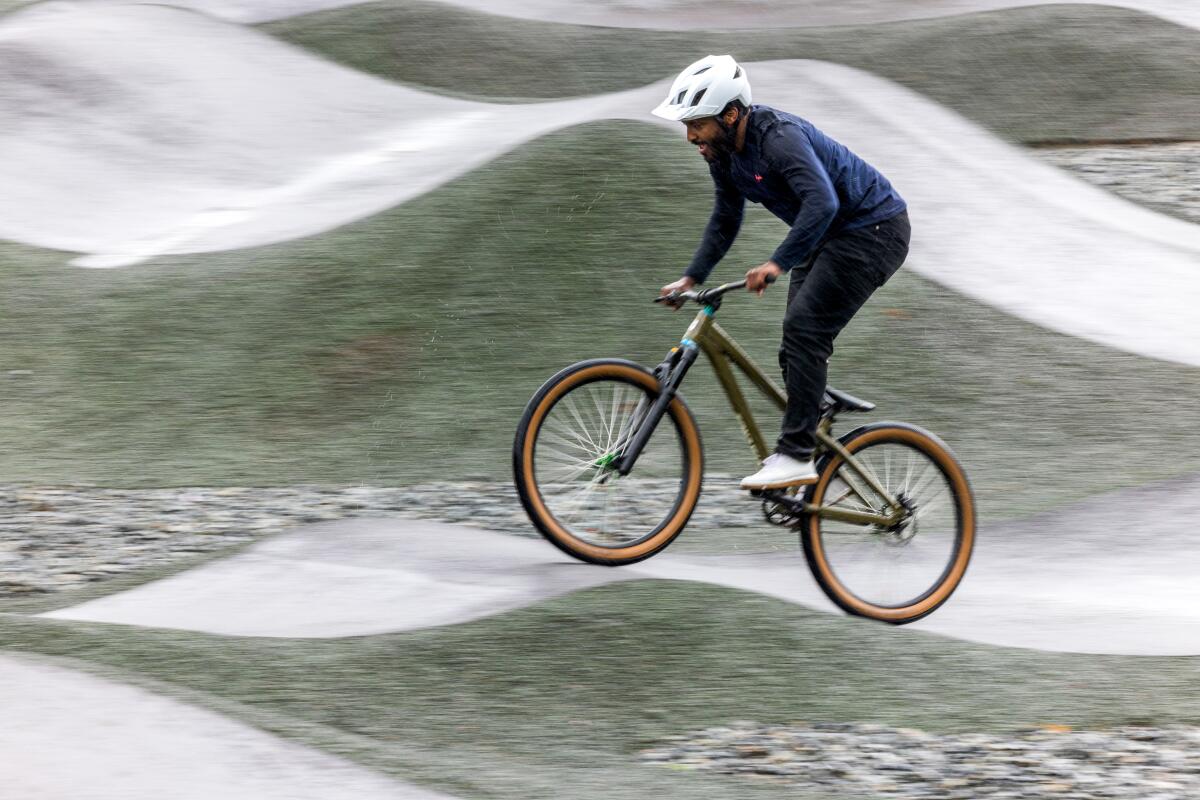
Eliot Jackson, a pro mountain biker, showcases his skills at the Inglewood Pumptrack.
(Alisha Jucevic / For The Times)
Jackson also hoped to help remedy the lack of diversity within the professional biking industry by building the track. Throughout his decade-plus long career, he was often the only Black person — or person of color — at the starting line at competitions. In August, after he retired from World Cup competition, Jackson launched the Grow Cycling Foundation, which is dedicated to making cycling more inclusive.
“I just thought about my life and all of the serendipitous things that led up to that,” says Jackson. Like his family “happening to move to California, where there’s mountains [and] my friend happening to take me up to Whistler Mountain Bike Park and introduce me [to downhill].”
“You start to think about the lack of opportunities that exist there, and I said, ‘What can I do?’” adds Jackson, who’s the chief executive of Grow Cycling, as well as a mountain bike expert for Red Bull.
The Inglewood Pumptrack, which cost $1.2 million, was fully funded by the cycling community for the cycling community with more than $300,000 in donations from individuals. The rest came from founding partners, including such brands as Yeti Cycles, Ride Fox, Pinkbike, Santa Cruz Bicycles, the Rapha Foundation and Adidas, Jackson says. (Jackson is also an ambassador for Santa Cruz Bicycles, Rapha and Fox.)
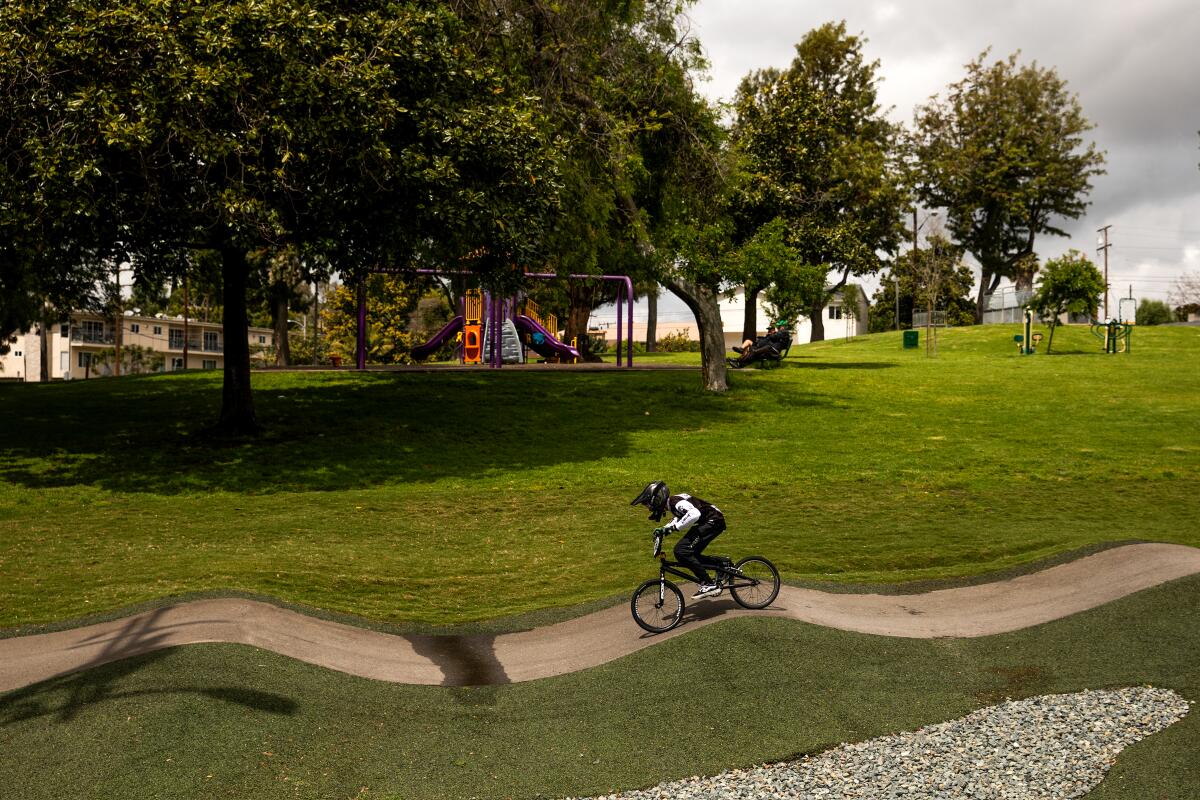
Jin Morita, 13, rides on the World Championship Track, one of two tracks at Inglewood Pumptrack at Edward Vincent Jr. Park in Inglewood.
(Alisha Jucevic / For The Times)
Constructed by Velosolutions, the site features two asphalt courses: The Woodlands and World Championship tracks. Woodlands, which is smaller and surrounds a host of trees, has smaller rollers and is designed for slower speeds. Whereas the colossus World Championship track, which is wider with large rollers, was built in a mirrored design so two riders can race in opposite directions at the same time. The design and name for this track was intentional as Jackson plans to host world championship competitions there. (Between both tracks, roughly 300 to 400 people were riding at the same time on opening day.) Both tracks are open to all ages and levels.
The Inglewood Pumptrack was specifically built with bicyclists in mind; for years, they were pushed out of skate parks and weren’t welcomed by the skateboarding community, says Joi Jackson, Eliot’s mom and the president of Grow Cycling.
They wanted to set a more inclusive precedent for bike infrastructure, so there are bike priority days at the track. Other wheels such as skateboards, longboards and rollerblades are welcome on specific days of the week. (A sign near the track entrance includes more details on this and other rules for the track.)
People who use wheelchairs or adaptive bikes can also utilize the track. However, no scooters or motorized vehicles such as e-bikes, hoverboards or electric scooters are allowed.
Ameri de Vera, 9, who rides BMX on a factory team for a company called Answer BMX, goes to the Inglewood Pumptrack at least twice a month with her older sister.
“I was scared at first because you have to get used to how it sways,” says De Vera, who was preparing for the BMX world championships on a recent Sunday. “It sways in different directions and there’s some sharp turns too. So you have to keep your eye on those, but it was really fun once I got used to it. And you can ride your skateboard on it.”

Eliot Jackson rides the Inglewood Pumptrack with BMX athletes, Ameri de Vera, 9, left, and her sister Vida de Vera, 11, center.
(Alisha Jucevic / For The Times)
For first-timers, she recommends gearing up and wearing a helmet for safety “because the first time, you’re probably going to fall.” She also encourages people to be aware of their surroundings and pay attention to what others are doing to avoid accidents.
Although there’s a skate ramp at the park, Erik Barnes, 50, says he prefers to ride on the pump track.
“There’s a proliferation of skate parks here, but none like this,” says Barnes of West Adams, who’s been an avid skateboarder since he was a teen. He sometimes brings his teenage son to the track with him.
“I meet a lot of guys my age or us older skaters who are just falling in love with this place. Everyone’s like, ‘It’s reignited skateboarding for me. It got me back into it,’ and that’s definitely the case for me.” Barnes frequents the track at least twice a week, usually before work.
What Barnes loves most about the track is that “you don’t have to be really good to enjoy this park.”
“You can kind of get yourself into a really fun zone of just cruising, which is a really pleasurable, fun thing to do,” he says. “It’s not exceedingly difficult.”
He adds, “You can just get into a nice flow. It’s rhythmic. It’s meditative and it’s a really good workout because you’re basically just doing squats the whole entire time.”
After not seeing many rollerskaters at the Inglewood Pumptrack each time they visited, Bily Ruiz, 26, started a weekly meetup called K.h.a.o.t.i.c Quads. The group, whose members range in age from 1 to 50, meet there on Sunday mornings.
“I love the community that [the track] is creating, because at some parks, the culture can be very standoffish or they don’t really talk to each other,” says Ruiz. Whereas at the Inglewood Pumptrack, “since everyone’s so excited, everyone’s like ‘What’s up? Hi. I see you. Good job.’”
“I look forward to it every weekend,” Ruiz says about about the group. “It’s so exciting, and every time we meet up, it fills me up with so much energy.”

“We built something that people love and that makes me the most happy,” says Eliot Jackson.
(Alisha Jucevic / For The Times)
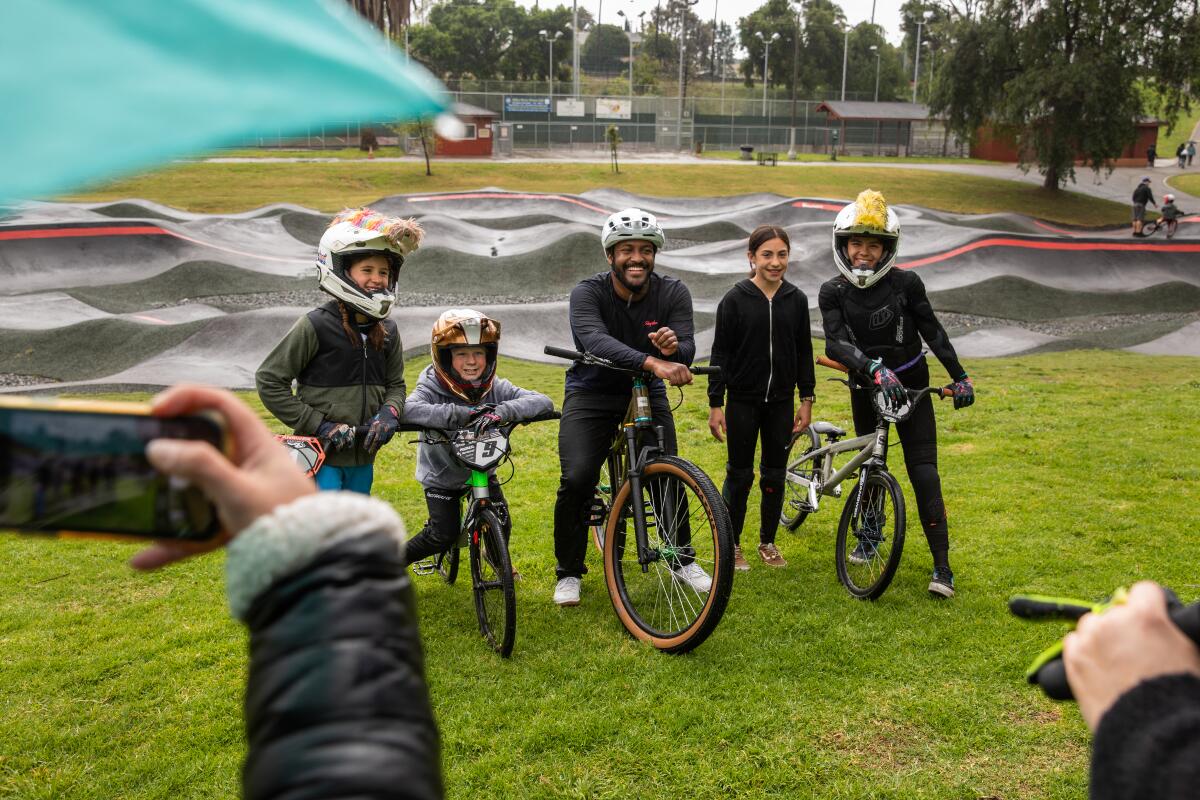
The parents of young BMX athletes take a photo of them with Eliot Jackson, center, at the Inglewood Pumptrack.
(Alisha Jucevic / For The Times)
The Grow Cycling Foundation has also donated permanent bike fleets to nearby in Inglewood elementary and middle schools , which they use for education programs. The organization views the pump track as the first step in a long-term mission to make cycling culturally relevant in the city.
In the meantime, though, Jackson says he’s enjoyed seeing kids who may have never seen or heard of a pump track before get to experience one for the first time — or simply fall back in love with riding bikes.
“We built something that people love and that makes me the most happy,” he says. “I just think about us as a family when we were growing up and my mom would’ve taken us every single day, and look at where I am now?
“And that will happen. There will be a kid who goes on to be better than I ever could because they got to discover a bicycle at this place.”
Lifestyle
Ryan Gosling is 'The Fall Guy' in this cheerfully nonsensical stuntman thriller

Ryan Gosling is Colt Seavers in The Fall Guy.
Universal Pictures
hide caption
toggle caption
Universal Pictures

Ryan Gosling is Colt Seavers in The Fall Guy.
Universal Pictures
From the 1933 action film Lucky Devils to the 1980 comedy-thriller The Stunt Man to Quentin Tarantino’s Once Upon a Time … in Hollywood, filmmakers have long delighted in turning the camera on stunt performers, those professional daredevils who risk life and limb to make action scenes look convincing.
It’s a hard, often thankless job, which is why for years people have lobbied the motion picture academy to present an Oscar for stunt work. And of course, it’s a dangerous job: Just last month, while shooting the Eddie Murphy movie The Pickup, several crew members were injured during a stunt involving two rolling cars.
There’s a lot of vehicular mayhem in the noisily diverting new action-comedy The Fall Guy, a feature-length reboot of the ’80s TV series. Ryan Gosling stars as a highly skilled stunt performer named Colt Seavers, who, despite his cynical film-noir-style voiceover, genuinely loves his job.
Colt loves movies and moviemaking, loves hurling himself off balconies and strapping himself into soon-to-be-totaled automobiles. Most of all, he loves Jody Moreno, an up-and-coming assistant director played by Emily Blunt, and she loves him right back.

Ryan Gosling and Emily Blunt star in The Fall Guy.
Universal Pictures
hide caption
toggle caption
Universal Pictures

Ryan Gosling and Emily Blunt star in The Fall Guy.
Universal Pictures
Colt works mainly as a stunt double for Tom Ryder, a world-famous movie star played by a preening Aaron Taylor-Johnson. But when Colt suffers a life-threatening injury on the set, he quits the biz in despair and ghosts Jody for more than a year while he recovers. But then he learns that Jody is directing a big-budget sci-fi movie in Sydney and wants him to be Tom’s stunt double again. Upon arriving Down Under, however, Colt finds out that Jody did not ask for him and has no idea why he’s here.
The reason for Colt’s appearance on the set is one mystery in a cheerfully nonsensical thriller plot devised by the screenwriter Drew Pearce. There’s also a body in a bathtub, an incriminating cell phone and several amusing side characters, including a busybody producer played by Hannah Waddingham of Ted Lasso fame.

Another key player is Colt’s best friend and stunt coordinator, Dan, played by the always excellent Winston Duke. In one endearing running gag, Colt and Dan keep quoting dialogue from classic films like The Last of the Mohicans, The Fugitive and The Lord of the Rings trilogy, all of which The Fall Guy giddily tries to outdo in its sheer volume of death-defying mayhem.
Before long, Colt isn’t just performing stunts. He’s forced to put his well-honed survival skills to good use off the set, whether he’s beating up thugs in a nightclub, punching villains in a helicopter or getting tossed around in the back of a speeding garbage truck. That’s one of several set-pieces that the director David Leitch opted to shoot using practical techniques, rather than CGI — a decision that gives this stunt-centric movie an undeniable integrity.

The Fall Guy is undoubtedly a passion project for Leitch, who once worked as a stunt double for actors including Brad Pitt and Jean-Claude Van Damme. (He nods to this by giving Colt a handy canine companion named Jean-Claude.) Leitch can direct action beautifully, as he did in the Charlize Theron smash-’em-up Atomic Blonde. But he can also go too flamboyantly over-the-top, as in sloppier recent efforts like Bullet Train and Hobbs & Shaw. The Fall Guy is better than those two, but it would have been better still with cleaner action, tighter editing and a running time south of two hours.

Blunt is such a good comedian and action star that it’s a shame she doesn’t get more to do in either department; Jody may be in the director’s chair, but as a character, she’s mainly a second banana. The Fall Guy is Gosling’s picture. Unlike the brooding, taciturn stuntmen the actor played in Drive and The Place Beyond the Pines, Colt is a wonderfully expressive goofball. There’s a moment here, after a fiery boat chase around Sydney Harbour, when Colt emerges triumphant from the water, clothes dripping and muscles bulging, while a euphoric cover of Kiss’ “I Was Made for Lovin’ You” surges for the umpteenth time on the soundtrack. It’s ridiculous and gloriously overwrought — and like the best-executed stunts, it comes perilously close to movie magic.
-

 News1 week ago
News1 week agoLarry Webb’s deathbed confession solves 2000 cold case murder of Susan and Natasha Carter, 10, whose remains were found hours after he died
-

 World1 week ago
World1 week agoHaiti Prime Minister Ariel Henry resigns, transitional council takes power
-

 News1 week ago
News1 week agoFirst cargo ship passes through new channel since Baltimore bridge collapse
-

 World1 week ago
World1 week agoUS secretly sent long-range ATACMS weapons to Ukraine
-

 World1 week ago
World1 week agoSpanish PM Pedro Sanchez suspends public duties to 'reflect'
-

 News1 week ago
News1 week agoAmerican Airlines passenger alleges discrimination over use of first-class restroom
-

 World1 week ago
World1 week agoAsia bears biggest climate-change brunt amid extreme weather: WMO
-

 Movie Reviews1 week ago
Movie Reviews1 week agoHumane (2024) – Movie Review
